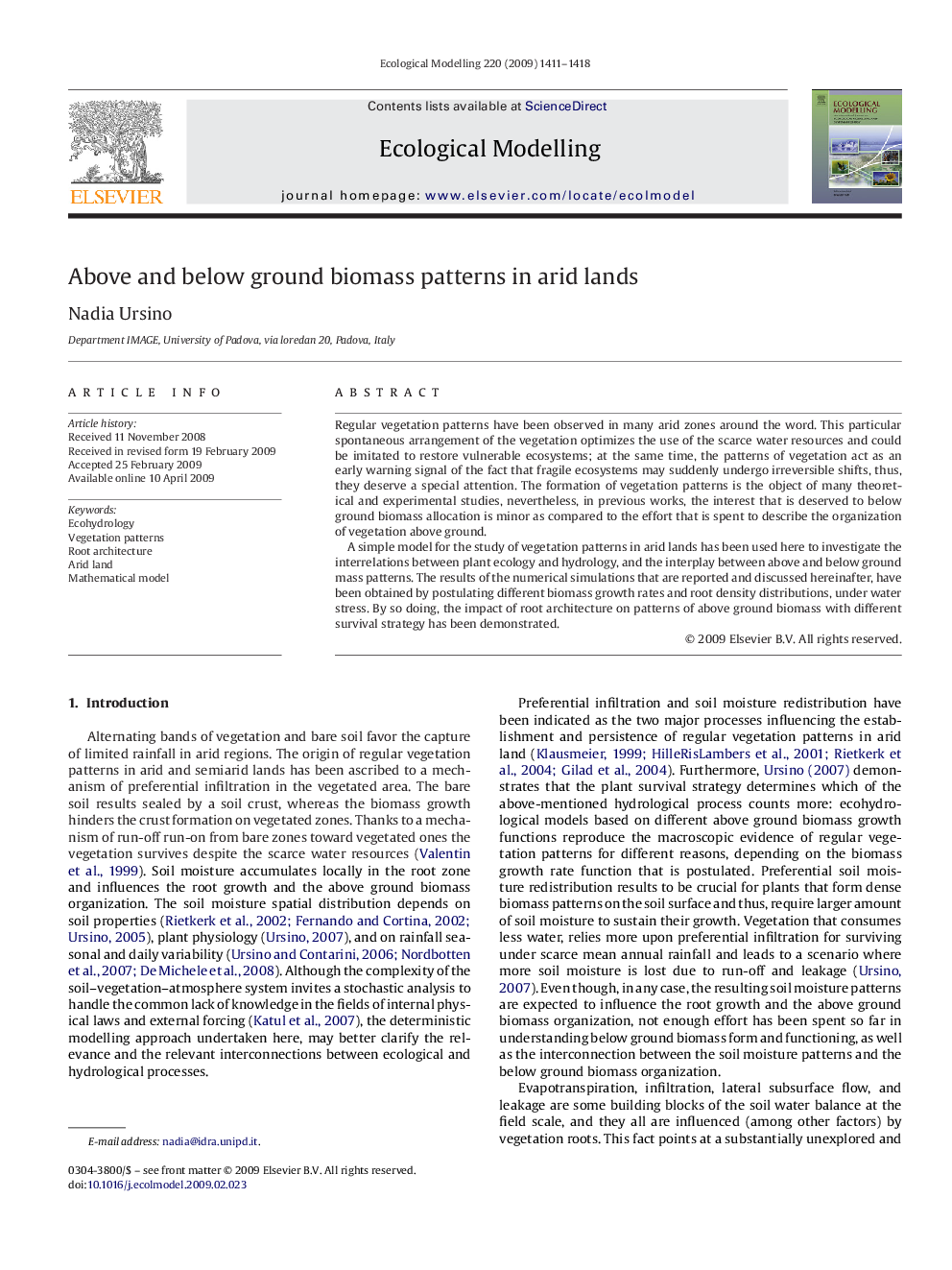| Article ID | Journal | Published Year | Pages | File Type |
|---|---|---|---|---|
| 4378077 | Ecological Modelling | 2009 | 8 Pages |
Regular vegetation patterns have been observed in many arid zones around the word. This particular spontaneous arrangement of the vegetation optimizes the use of the scarce water resources and could be imitated to restore vulnerable ecosystems; at the same time, the patterns of vegetation act as an early warning signal of the fact that fragile ecosystems may suddenly undergo irreversible shifts, thus, they deserve a special attention. The formation of vegetation patterns is the object of many theoretical and experimental studies, nevertheless, in previous works, the interest that is deserved to below ground biomass allocation is minor as compared to the effort that is spent to describe the organization of vegetation above ground.A simple model for the study of vegetation patterns in arid lands has been used here to investigate the interrelations between plant ecology and hydrology, and the interplay between above and below ground mass patterns. The results of the numerical simulations that are reported and discussed hereinafter, have been obtained by postulating different biomass growth rates and root density distributions, under water stress. By so doing, the impact of root architecture on patterns of above ground biomass with different survival strategy has been demonstrated.
